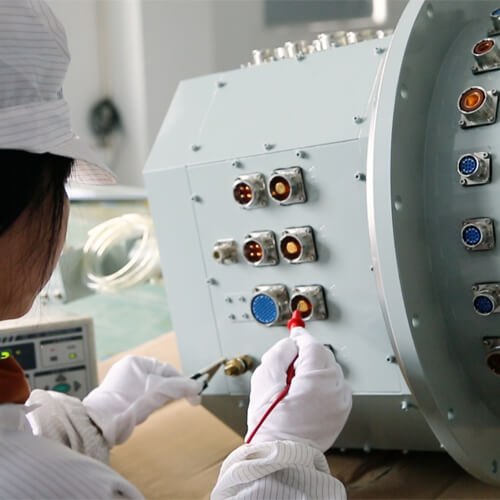Spinning Innovation: Delving into the Marvels of Seamless Power and Data Transmission.
In a world where constant motion and rotating systems reign supreme, connectivity solutions have to adapt to keep up with the pace. Enter the rotating electrical slip ring connector—a captivating innovation that enables seamless power and data transmission in rotating machinery and devices. Join us as we uncover the wonders of this dynamic connection, delving into its capabilities and its role in revolutionizing connectivity in a myriad of industries.
The concept of a rotating electrical slip ring connector may pique curiosity, as it combines the realms of electrical connectivity and rotational movement. These connectors are designed to bridge the gap between stationary and rotating components, allowing for the uninterrupted transmission of power, signals, and data in rotating systems.
The rotating electrical slip ring connector acts as a vital conduit, ensuring a continuous flow of electricity and signals between stationary and rotating parts. It consists of two essential components: the stationary side, known as the stator, and the rotating side, known as the rotor. The stator is typically mounted on the stationary part of the system, while the rotor is attached to the rotating component.
What sets the rotating electrical slip ring connector apart is its ability to maintain electrical contact while accommodating rotational movement. This is achieved through a combination of innovative design and engineering. The connector utilizes brushes or sliding contacts, along with conductive rings or tracks, to establish and maintain a reliable electrical connection as the system rotates.
The applications for rotating electrical slip ring connectors are vast and diverse. They play a crucial role in numerous industries, including robotics, wind turbines, packaging machinery, medical equipment, cranes, and many more. Any application that involves rotating components requiring power and signal transmission can benefit from the wonders of these connectors.
In robotics, rotating electrical slip ring connectors enable seamless power and data transmission between the robot’s base and its rotating arm. This facilitates precise control and communication, allowing robots to perform intricate tasks with accuracy. The connectors contribute to the efficiency and flexibility of robotic systems, enabling a wide range of applications in industries such as manufacturing, healthcare, and logistics.
In wind turbines, rotating electrical slip ring connectors facilitate the transfer of power and signals between the stationary generator and the rotating blades. These connectors play a vital role in ensuring reliable energy production by enabling continuous monitoring, control, and communication within the turbine system.
The packaging industry also benefits from the capabilities of rotating electrical slip ring connectors. They enable power and signal transmission between stationary control systems and the rotating parts of packaging machinery, allowing for precise control and synchronization during the packaging process. This contributes to increased efficiency, productivity, and reliability in packaging operations.
Medical equipment, such as CT scanners and MRI machines, relies on rotating electrical slip ring connectors to transmit power and data signals between stationary control units and rotating imaging components. The connectors enable high-quality imaging and accurate data acquisition while maintaining patient safety and comfort.
The durability and performance of rotating electrical slip ring connectors are critical for their successful operation in demanding environments. These connectors are engineered to withstand the challenges posed by continuous rotation, including friction, wear, and heat generation. Advanced materials, such as high-grade metals and specialized brushes, are utilized to ensure reliable electrical contact and minimize the risk of signal loss or power interruption.
As technology advances, rotating electrical slip ring connectors continue to evolve. Ongoing research focuses on enhancing their capacity to handle higher currents, accommodate more signals, and support advanced communication protocols. Innovations in materials, brush technology, and sealing techniques are being explored to meet the demands of ever-advancing industries.
In conclusion, rotating electrical slip ring connectors have revolutionized connectivity in rotating systems. Their ability to maintain a reliable electrical connection while accommodating continuous rotation has opened up new possibilities in various industries. From robotics and wind turbines to medical equipment and packaging machinery, these connectors enable seamless power and data transmission, driving efficiency, reliability, and innovation forward.
See What We Can Do

